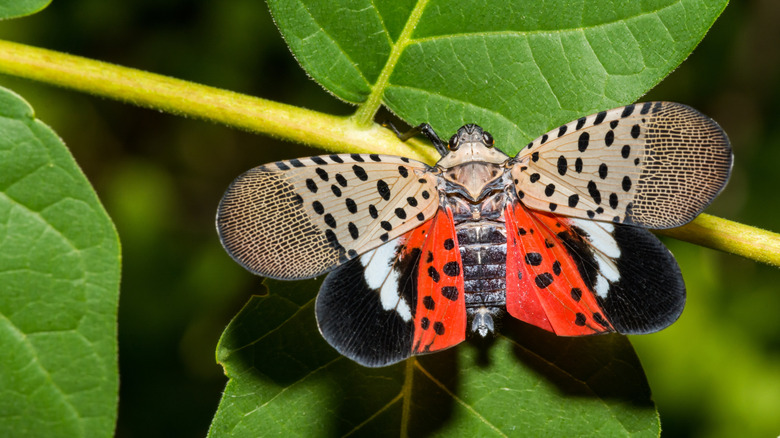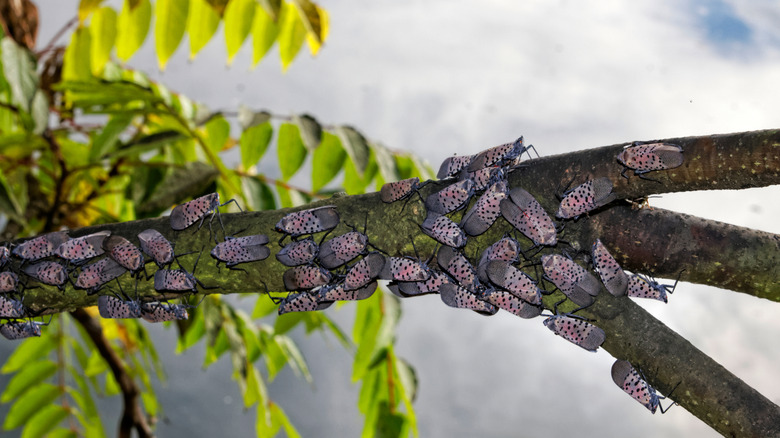What To Do If The Dreaded Spotted Lanternfly Makes It To Your Backyard
If you fall into the tender-hearted group of humans who gently escorts bugs outdoors or steps over them on sidewalks, experts are asking you to find a way to unleash a little destructive fury on one invasive insect species. The spotted lanternfly is a flying bug that first appeared in the U.S. in 2014 and has been wreaking havoc ever since. It's believed that they arrived on the Eastern Seaboard on a cargo ship from China. Since then, they've made their way to 17 states and most attempts to eradicate them have been only mildly successful.
What's so bad about the spotted lanternfly, you may wonder? They're actually quite fetching in appearance, about an inch long with delicate spots and distinctive black and red stripes punctuating their tan, moth-like appearance. But as is often the case, their good looks belie their destructive ways. These insects feed on fruit-bearing trees and various hardwoods, causing damage and destruction to the tree's circulatory system. Then, after feasting, they secrete a sticky substance called "honeydew" that blackens their host and leads to mold and rot . It also coats the tree's leaves, thereby denying them the light they need for plant growth through photosynthesis. This sticky goo also attracts other insects such as ants and wasps to the tree and surrounding area.
What to do if you encounter the spotted lanternfly
For now, the spotted lanternfly invasion is contained to Eastern and some Midwestern parts of the U.S. as depicted on this map. If you live in or visit an area of infestation, watch vigilantly for these bugs and hasten them to an early demise. The good news is, they're not hard to kill. They're rather poor flyers and prefer to hop out of danger, but can't move much. They don't bite or sting, either. Check your vehicle and clothing for any hitchhiking bugs or egg masses. The primary way spotted lanternflies have proliferated and spread has been by stowing away or laying eggs on any moving vehicles -– or items that are transported by these vehicles, such as firewood. Bug experts recommend smashing any spotted lanternfly egg masses you come across.
It's especially important that you monitor your property for any signs of these bugs as well. Inspect trees regularly, especially those that lanternflies are drawn to like fruit trees, hardwoods like maple and poplar, and one particular tree called the tree of heaven (Ailanthus altissima) which is also an invasive species from China. These trees are spotted lanternflies' favorite meal and these types of invasive plants should be avoided and eradicated whenever possible. There are pesticides that can be applied to infested trees that will kill the bugs without harming the tree. Another eradication method is to build traps that catch the bugs as they climb up the tree. It may sound brutal and barbarian, ganging up on a small bug, but just this once — you're given license to kill without guilt or remorse.

